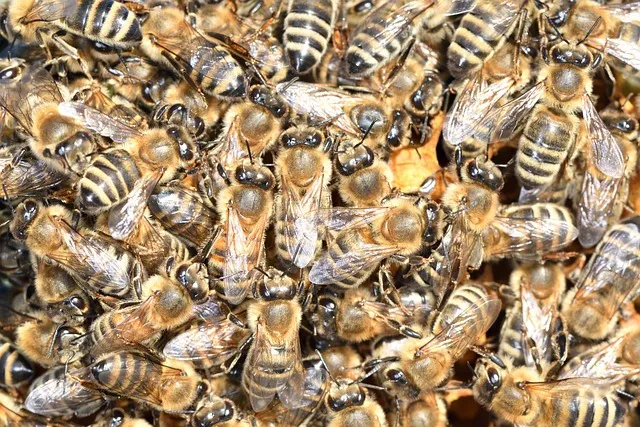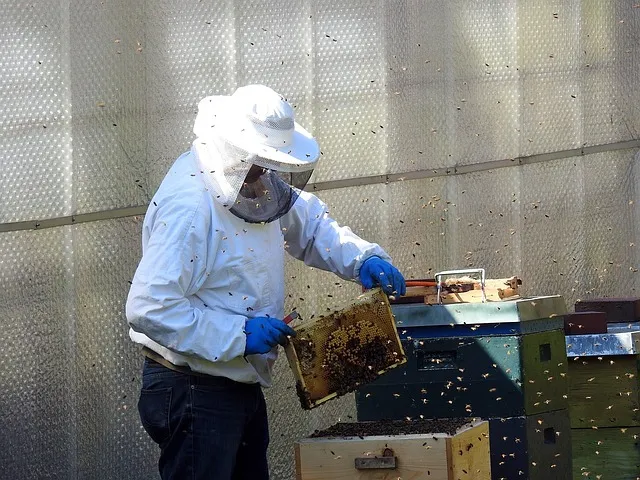What happens to a dog who ate a bee? What should l do for first aid?
By nature, dogs are explorative, playful, and curious. They always want to capture or run after everything that is on the move: cows, cats, rodents, birds, and even insects just for fun. They also have excellent reflexes on their mouths and are good at catching up with something thrown to them in the air.
Unfortunately, your dog may chase and snap after a bee and end with a painful sting on its mouth, face, eyes, or feet. It may also end up swallowing and eating the insect.
Their nosy nature puts them at a higher risk of stings than humans, from bees and other insects such as hornets, wasps, ants, and even spiders.
Similar Articles you may like to read –
Can ants destroy a beehive?
What happens if you crush a bee?
What animal kills bees?
How many bees can kill a human? if sting together
What happens to a dog that ate a bee?
There is no potential danger that an ingested bee will cause to your lovely pet. A bee is venomous but not poisonous. It can only release venom through a stinger. That is why a digested bee will cause no harm. It will digest it just like another meal of protein.
However, a bee can sting the dog’s tongue, throat, or other internal organs leading to swelling. This will require you to take immediate action, just like human beings. A bee will always try to fight back and may succeed to sting. Dogs with allergies will require immediate veterinary action.
What to Do if Your Dog Eats a Bee
If your dog swallows a bee, you need to examine its lips, gums, mouth, and throat to see if it was stung as it munched on it. If there is no sign of a sting or swelling, your dog is out of danger. However, honey bees can still sting the insides.
You can only discover this through its reaction. Suppose allergic reactions manifest, like vomiting, diarrhoea, difficulty breathing, and swelling on the eyes or face. In that case, it is good to seek professional help from a vet as soon as you can.
Allergic reactions mainly occur fast and can be life-threatening. A vet will assess your dog and give medications to clear the allergic reaction. On top of antihistamines, epinephrine or corticosteroids can be given. For severe reactions (anaphylaxis), hospitalisation and more extreme care may be necessary.
It can be dangerous if your pet friend is stung in the mouth. The swelling due to the effect of a sting can block its airway and hinder its breathing. It is usually hard to remove a bee sting from the dog’s mouth. A vet will assist you in treating such reactions and removing the sting.
How to Help Your Dog Ease the Pain of a Sting
You can manage mild reactions to a bee sting at home. These only cause swelling and mild discomfort, which ease the next day. Your vet can also help to administer medication to ease irritation and pain.
A dog that is stung on the mouth has trouble eating. Ensure you supply them with moist food. Alternatively, you can soften their dry food with water to minimise upset on the gastrointestinal tract.
Signs that Your Dog is Suffering from a Bee Sting
If your pet friend is allergic to bee stings, they may develop a reaction within minutes or hours of being stung. It is recommended to keep a close look for 24 hours. You may even opt to contact your vet earlier.
The effects of a bee sting on your dog can be mild or severe.
Mild Symptoms
- Pain and agitation
- Drooling
- Puffiness of the stung area
- Swelling or redness
- crying and running in circles
Signs of Allergic Reaction
- Swelling of eyes, ears, muzzle, or throat
- Itchiness and scratching
- Continuous vomiting and diarrhoea
- Excessive drooling
- Weakness
- Difficulty in breathing
- Coughing
- Erratic heart rate.
- Collapsing
- Disorientation
How to Prevent Your Dog from Eating Bees
The only way to prevent bee stings is by restraining your dog from going near them. Bees are everywhere looking for food resources, especially on flower beds. They may also build their homes in trees or eaves of houses.
Be sure to monitor your property and trees in your compound for bee nests and have them removed. Again if you have a beehive in your compound, keep the dog away from the area.
It is also wise to keep the phone numbers of your local vet clinic in case of an emergency. If your dog is allergic to bee stings, an epi-pen may be necessary for future use. What is the Reaction of a Dog that has Been stung by a Bee Previously?
Interestingly, some dogs seem to remember being stung previously. Some develop phobias of flying insects that cause them to run away from flies and bees at any given time. They may even tremble uncontrollably.
On the other hand, the fear of being stung can trigger them into chasing the bee more fiercely than before. History causes the dogs to be unhappy when they run after bees.
More articles you may like to read –
What animal kills bees?
Is taking honey from bees cruel?
Are honey bees high maintenance?
Do beekeepers develop immunity to bee stings?
FAQs
Do dogs eat bees?
Yes, In many cases, they swallow and digest a bee just without being stung.
Should I worry if my dog eats a bee?
Your only worry should be a sting on the mouth, throat, or insides. When digested, bee venom is harmless.
Why would a dog want to eat a bee?
A moving thing always entices a dog. It will likely snap at a flying bee which may end up in its mouth to catch it.
Can my dog develop an anaphylactic reaction after being stung by a bee?
A very few per cent of dogs develop severe allergic reactions after a bee sting, just like human beings. If you realise any allergic reactions on your fur friend, it is good to contact your vet.
How long will it take my dog to recover from a bee sting?
A dog will recover in 2 or 3 days from a usual bee sting with mild swelling. However, allergic reactions often take a long time because they are immune responses.
Can a dog die due to a bee sting?
Yes, it is possible because it can be fatal. This can happen if no immediate action is taken after a severe allergic reaction on bees.



